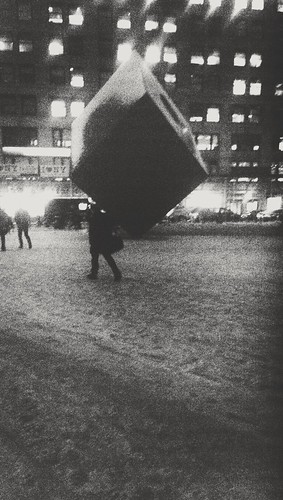Ative functionality assessments, as in Section 5.. (A fraction of those photos
Ative efficiency assessments, as in Section 5.. (A fraction of those images are also part of the generic corrosion dataset we make use of in Section five representing, in that case, pictures from one particular amongst many vesselsvessel areas this dataset consists of.)Figure 9. Images from a number of the flights performed inside the bulk carrier: (Top rated) cargo hold; (Middle) topside tank; (Bottom) forepeak tank.Figure 20. Trajectories estimated for some of the flights performed inside the bulk carrier.Sensors 206, 6,22 ofFigures 2 and 22 show detection benefits for a few of the images captured during the flights inside the cargo gold. This area on the vessel was in quite excellent condition, so that not quite a few CBC detections may be expected, as may be observed from the outcomes obtained. The other two places from the vessel did include a number of cases of CBC, as can be observed from Figures 23 and 24 for the topside tank and Figures 25 and 26 for the forepeak tank. As mentioned above, each regions are often not illuminated, what necessary the activation with the MAV spotlight for the duration of flight. Global performance results for the field trials, i.e  thinking of all three datasets alone and jointly for the entire vessel, are shown in Figure 27a within the form of, respectively, histograms of accuracy values, fraction of false positives and fraction of false negatives, inside the same way it has been completed for the generic corrosion dataset. Typical values can be discovered in Figure 27d.Figure 2. Examples of CBC detection for the cargo hold dataset (I): (Major) original images; (Middle) CBC detector output; (Bottom) detection contours superimposed in red.Figure 22. PubMed ID:https://www.ncbi.nlm.nih.gov/pubmed/22685418 Examples of CBC detection for the cargo hold dataset (II): (Prime) original pictures; (Middle) CBC detector output; (Bottom) detection contours superimposed in red.Sensors 206, 6,23 ofFigure 23. Examples of CBC detection for the topside tank dataset (I): (Best) original pictures; (Middle) CBC detector output; (Bottom) detection contours superimposed in red.Figure 24. Examples of CBC detection for the topside tank dataset (II): (Top) original pictures; (Middle) CBC detector output; (Bottom) detection contours superimposed in red.Figure 25. Examples of CBC detection for the forepeak tank dataset (I): (Top) original pictures; (Middle) CBC detector output; (Bottom) detection contours superimposed in red.Sensors 206, six,24 ofFigure 26. Examples of CBC detection for the forepeak tank dataset (II): (Best) original photos; (Middle) CBC detector output; (Bottom) detection contours superimposed in red.(d)dataset cargo hold topside tank forepeak tank bulk carrierA 0.9900 0.9353 0.9576 0.FFP 0.0099 0.0336 0.0329 0.FFN 0.000 0.03 0.0095 0.Figure 27. Global performance histograms, at the pixel level, for the cargo hold, topside tank and forepeak tank datasets alone and jointly for the whole vessel: (a) Accuracy values; (b) Fraction of false positives; (c) Fraction of false negatives; (d) Average performance values.As could be observed, classification overall performance is slightly far better than the a single obtained for the generic corrosion dataset, together with the CBC detector behaving nicely generally for the three datasetsenvironments, having a similar, low volume of classification errors representing on typical about 3 from the image pixels, when once again slightly greater concerning false positives. 5.3. Some BML-284 chemical information Comments on the Time Complexity from the Defect Detector With regards to the time complexity of the classifier, most part of the time necessary is spent on computing the patch descripto.
thinking of all three datasets alone and jointly for the entire vessel, are shown in Figure 27a within the form of, respectively, histograms of accuracy values, fraction of false positives and fraction of false negatives, inside the same way it has been completed for the generic corrosion dataset. Typical values can be discovered in Figure 27d.Figure 2. Examples of CBC detection for the cargo hold dataset (I): (Major) original images; (Middle) CBC detector output; (Bottom) detection contours superimposed in red.Figure 22. PubMed ID:https://www.ncbi.nlm.nih.gov/pubmed/22685418 Examples of CBC detection for the cargo hold dataset (II): (Prime) original pictures; (Middle) CBC detector output; (Bottom) detection contours superimposed in red.Sensors 206, 6,23 ofFigure 23. Examples of CBC detection for the topside tank dataset (I): (Best) original pictures; (Middle) CBC detector output; (Bottom) detection contours superimposed in red.Figure 24. Examples of CBC detection for the topside tank dataset (II): (Top) original pictures; (Middle) CBC detector output; (Bottom) detection contours superimposed in red.Figure 25. Examples of CBC detection for the forepeak tank dataset (I): (Top) original pictures; (Middle) CBC detector output; (Bottom) detection contours superimposed in red.Sensors 206, six,24 ofFigure 26. Examples of CBC detection for the forepeak tank dataset (II): (Best) original photos; (Middle) CBC detector output; (Bottom) detection contours superimposed in red.(d)dataset cargo hold topside tank forepeak tank bulk carrierA 0.9900 0.9353 0.9576 0.FFP 0.0099 0.0336 0.0329 0.FFN 0.000 0.03 0.0095 0.Figure 27. Global performance histograms, at the pixel level, for the cargo hold, topside tank and forepeak tank datasets alone and jointly for the whole vessel: (a) Accuracy values; (b) Fraction of false positives; (c) Fraction of false negatives; (d) Average performance values.As could be observed, classification overall performance is slightly far better than the a single obtained for the generic corrosion dataset, together with the CBC detector behaving nicely generally for the three datasetsenvironments, having a similar, low volume of classification errors representing on typical about 3 from the image pixels, when once again slightly greater concerning false positives. 5.3. Some BML-284 chemical information Comments on the Time Complexity from the Defect Detector With regards to the time complexity of the classifier, most part of the time necessary is spent on computing the patch descripto.
HIV gp120-CD4 gp120-cd4.com
Just another WordPress site
